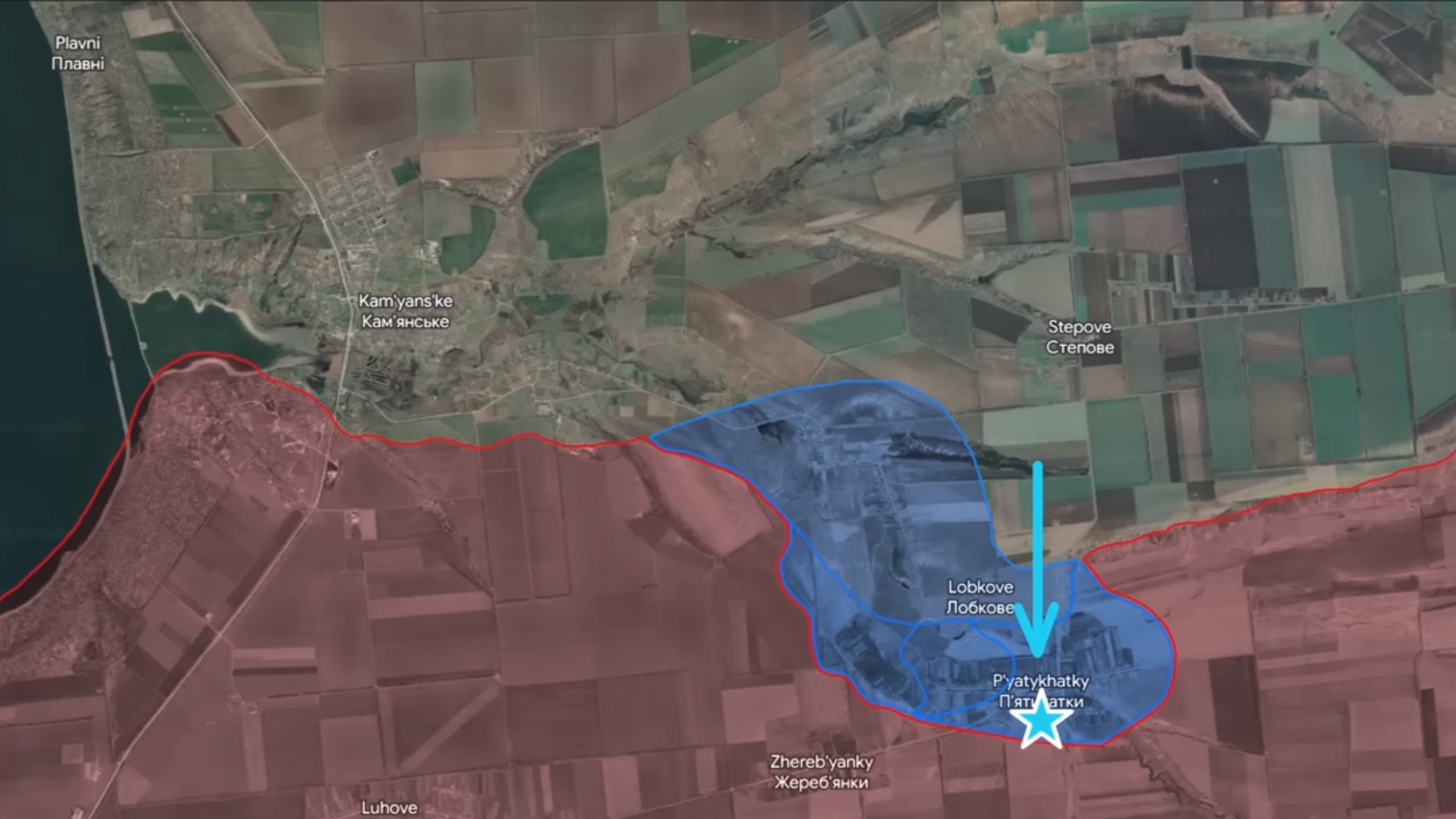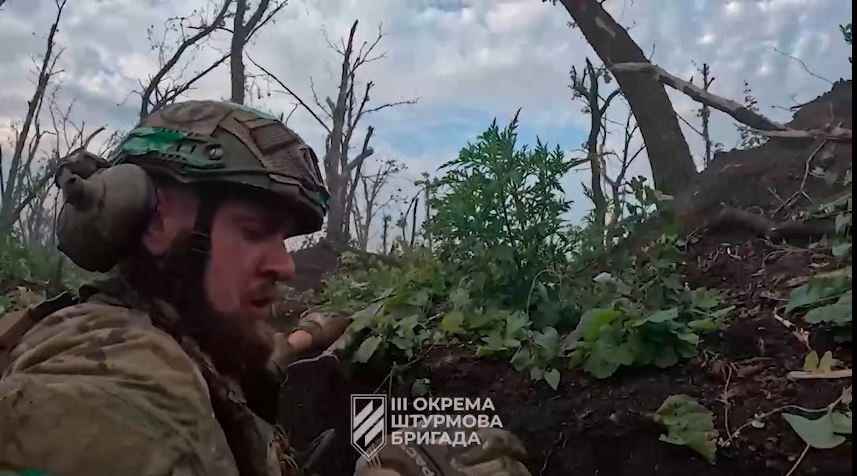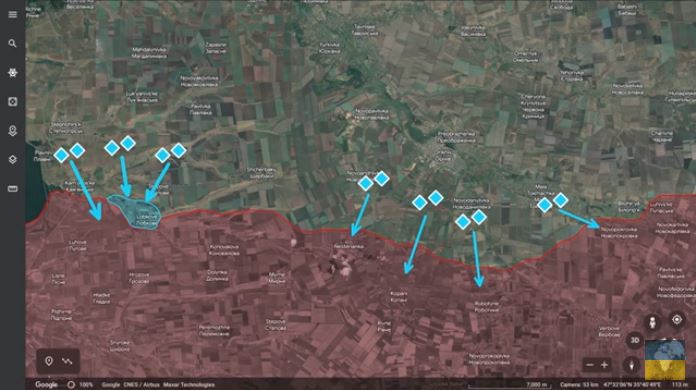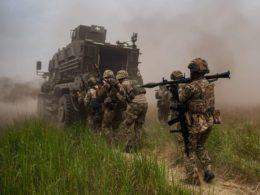
As 2023 elopes with the frontline largely unchanged, two questions are on everybody’s mind: why did Ukraine’s counteroffensive fail to regain ground, and what will 2024 bring?
Reactions include toxic defeatism, a blame game, and a sense of frustration as the future hangs in limbo and President Zelenskyy himself admits that nobody knows when Russia’s war against Ukraine will end.
Helping Euromaidan Press figure out what’s next is Andriy Zagorodnyuk, ex-Ukrainian Minister of Defense and head of the Center for Defense Strategies, with whom we discuss Washington Post’s recent analysis of Ukraine’s counteroffensive.
The WP article named divergences between Ukraine and the US in planning the counteroffensive as a major reason for the failed counteroffensive.
Particularly, the US, which was deeply involved in planning and simulating the counteroffensive, was adamant about attacking in only one direction in the south. Ukrainian officials insisted on having a three-pronged attack.
Indeed, Ukrainian and US defense officials had differences of opinion and approach, Andriy Zagorodnyuk confirms. However, American opinions had a limiting factor: a lack of officers on the ground who would be collecting information daily. Moreover, officers of the general strategic level are absent in Ukraine overall.
Wrong assumptions and a lessons-learned analysis
“To be certain about the operational decisions, you need to be in the theater of operations, ask questions, get the answers calibrated,” Mr. Zagorodnyuk says. Only then is it possible to make high-quality plans and war games.
The lack of American presence in Ukraine likely undermined the eight wargaming sessions mentioned by the WP.
“It seems like the assumptions used were far from reality. Many of them went straight to hell from day two of the counteroffensive,” Andriy Zagorodnyuk says, referring to the day when Ukraine’s command decided to abandon large mechanized assaults relying on Western equipment after facing major losses.
However, both the US and Ukraine approved the plan, made a joint decision to start it, and both carry responsibility for the outcomes. Playing a blame game now leads to nowhere.
“To say that Ukraine didn’t read the book correctly is unfair. The West has never fought with that amount of minefields protected by that amount of drones. Also, it never fought without air support. So the last thing I would suggest we do is to say ‘the plan was good, the execution was bad,’” Zagorodnyuk says.
According to him, a war campaign is like a business plan: “If a business plan goes wrong, is it the implementation that is wrong, or was the plan purely theoretical, made on the wrong assumptions, and not really related to actual life?”
The main problem with the Washington Post analysis is that it does not answer the most important question: “what now,” Zagorodnyuk says, offering two points:
Do not despair; all wars have had setbacks
“All long wars have had mistakes. Now, the most important thing for all of our allies is that we not get into despair and disbelief, saying ‘this is an unwinnable war, we should quit,’” Andriy Zagorodnyuk believes.
Only a weak coalition that does not know how to win wars would do this. On the contrary, a “strong coalition makes lessons-learned analysis, openly discusses shortcomings and says, ‘okay, we still need to win this war, we still need to deal with this enemy and let’s just build up a proper strategy, let’s see what went wrong, where the problems are, and let’s make corrections and build it up,’” he stresses.
Setbacks have been observed in every single major war in the history of the world. Some ended quickly because of serious advantages of one side. Others dragged on long, with both sides facing problems. One needs to simply recall the massive losses of the Western coalition at the start of the Second World War:
“There have been substantial issues with the wars in Afghanistan and Iraq. There have been people who couldn’t answer where this war was going and how it would end. And so we need to be strong, resolved, that the collective power of the coalition is vastly bigger than Russia and even Russia with Iran.”
Analyze the changing technological landscape and adapt
The Washington Post analysis quotes Ukrainian commanders as saying that a Western-style offensive is useless against layers of Russian fortifications under a sky humming with kamikaze drones.
Mr. Zagorodnyuk stressed precisely this in our previous conversation, saying that the Russo-Ukrainian war is entering uncharted territory for which no doctrines exist – a fact that Western officials do not yet grasp:
“We need to face the fact that the technological landscape of this war is changing. This is irreversible; it’s out of our control. We need to understand this trend and adapt.”
As Ukraine’s counteroffensive was no surprise, Russia had plenty of chances to prepare a multi-layered defense.
Additionally, drone technologies amplified many of Russia’s old-school solutions. Mr. Zagorodnyuk names one battle where half of US-made M58 MICLIC demining vehicles were lost due to Russian drone attacks.
Drones, technologies are the key to victory
Drone technologies have made war much more asymmetrical and technological than before, with FPV (first-person view) drones playing first fiddle. Guided through VR glasses, these drones worth up to several thousand dollars worth can carry items like grenade mines or custom-made explosive devices and can damage or even destroy military equipment worth millions of dollars that take many months of work to make.
Ukraine pioneered asymmetrical drone solutions at the start of the war.
FPV drones were one of the reasons for Ukraine’s success in liberating Kherson Oblast in November 2022, and were a great source of irritation for the Russians, as revealed by intercepts from the time, Zagorodnyuk says.

But then, Russians built up this capability very quickly, and now drones are used from both sides, with Russians prevailing numerically in some areas:
“This makes lots of other doctrines and equipment irrelevant. You have a lot of equipment and machinery moving, then suddenly attacked by the swarms of those drones, and that’s it. You have millions of dollars wasted.”
FPV drones for military means are still at the beginning of their development, and many changes are expected. The biggest question is whether Ukraine can maintain its technological leadership — because this is the key to victory.
The most critical question enabling victory is Ukraine turning on its industry and building a million FPV drones, pairing up with its Western partners.
For this, Ukraine needs to simply produce more drones and develop superior models. It also needs to find solutions to counter Russia’s drone-jamming electronic warfare and to train more people to use drones.
But technology alone does not ensure victory; a prevalence in capabilities, either symmetric or asymmetric, does:
“In our case, it must be asymmetric, because we’re not going to win the war with Russia by old-school methods. And the counteroffensive is the biggest lesson. The days of old-school war, where everything was based on armored vehicles, armored equipment, etc., are gone. They’re not going to return. We still need armored vehicles because we still need to deliver people, but they will not be sufficient for victory,” Mr. Zagorodnyuk says.
There are many options Ukraine can use to develop FPV technology for the battlefield, but, critically, no country has this capacity ready. There is no warehouse with a million drones; Ukraine needs to turn on its industry and build them, pairing up with its Western partners.
“That’s the most critical question that enables victory.”
Why did the counteroffensive start so late?
The timing of Ukraine’s counteroffensive is another major factor of disagreements between the allies.
The Washington Post analysis paints a picture where US defense officials pushed their Ukrainian counterparts to start the counteroffensive as early as mid-April. At the same time, Ukrainians held back, claiming their troops were not yet adequately trained and did not have the proper support.
Would Ukraine have indeed been able to start in April?
The first aspect to consider is that weapons deliveries were badly delayed.
In the spring-summer of 2022, Ukraine was exasperated that requests for large mechanized assault vehicles, seen as essential for an offensive amid depleting stocks of Soviet-era equipment, were being met with protraction.
A case in point is modern Western battle tanks. Ukraine first signaled their need in June 2022. After many months of hand-wringing and pressure on German Chancellor Olaf Scholz, the greenlight for German-made Leopard tanks was given only in January 2023, with Poland donating the first four Leopard 2 tanks on 24 February.
US-made Abrams tanks also faced hurdles on their way to Ukraine, with the first vehicles arriving only in September, when Ukraine’s counteroffensive was already facing its first setbacks.
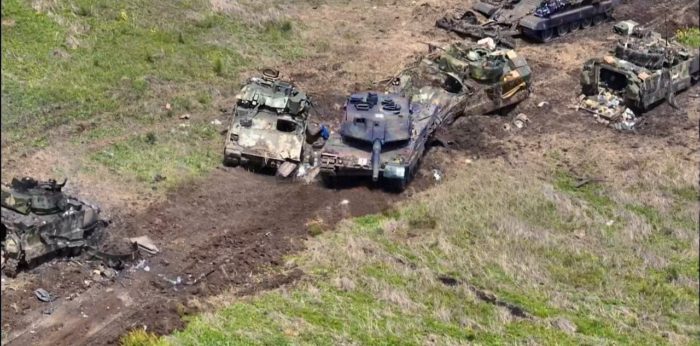
The ISW assessed the West’s delay in supplying lethal weapons to Ukraine, over fears of Russian escalation or otherwise, as having cost Ukraine a winter counteroffensive and gave the Russians time to prepare a multi-layered defense.
Moreover, the delivered equipment came without technical support or spares, was not in working condition, and needed repairs. The state of some vehicles was so poor that they were simply cannibalized for spare parts.
At times, half of the equipment that arrived from some of Ukraine’s partners was simply not in working condition, Mr. Zagorodnyuk says, citing direct army contacts.
The scope of the problem was underreported because Ukraine’s Ministry of Defense did not want to bring it up publicly. Hints were only dropped by Deputy Minister Havrylov, who, in June 2023, told the New York Times that Ukrainian officials have refrained from complaining about broken equipment to avoid embarrassing their benefactors.
At times, half of the equipment that arrived from some of Ukraine’s partners was simply not in working condition
Spare parts and technical parts were another issue affecting the offensive timeline. During the wars in Afghanistan and Iraq, many Western contractors serviced the equipment by opening service stations and warehouses close to the theater of war. But, they did not work in Ukraine after the Russian invasion in February 2022.
Ukrainian operators needed time to master the new war gear and establish logistical networks. And while the US set up a maintenance center in Poland and provided real-time advice to Ukrainian troops through interpreters, saying this was enough and 100% effective would be an overstatement, Mr. Zagorodnyuk says.
Lines of attack: should Ukraine have only focused on the direction to the Azov Sea?
A second major disagreement emerged regarding the direction of the counteroffensive. The US commanders insisted on concentrating all efforts on the south to make an opening in the Russian defense. However, Ukraine set up two more lines: towards Berdiansk and Bakhmut in east Ukraine’s Donbas region, a city that Ukraine had defended for eight months, to much American criticism that resources are being spent inefficiently.

Andriy Zagorodnyuk is one of those who defends Ukraine’s decision to hold Bakhmut and eastern Ukraine in general.
First, the decision was made by Ukraine’s president and commander-in-chief, who know more details about the theater of war than anybody else, details important for making such decisions. Then, Ukrainians in eastern Ukraine are still trying to live everyday lives, and Ukraine has a duty to protect them from being wiped out by the Russians, he stresses.
But more importantly, had Ukraine not mounted a defense in eastern Ukraine, Russia could have reached its proclaimed goal of taking over all of the Donetsk Oblast. After this, various scenarios would be possible, including declaring that its goals have been reached and announcing readiness for a ceasefire and fictitious negotiations.
Military analysts view such an operation as Russia’s pretext to rearm and attack with renewed vigor, similar to the Minsk agreements of 2014-2015.
“There would have been a million politicians around the world who would jump on it immediately, without understanding that they are playing Russia’s game. First, Russia would announce the victory of their so-called special military operation, which would destroy the whole messaging meaning of the coalition that has been sending a message to the world that aggression like that cannot win. But then they would buy time to recover, build up new capabilities, do lessons learned analysis, analyze Ukraine more, and build a stronger force. And then deliver a much more devastating blow,” Mr. Zagorodnyuk explains the logic behind wearing out Russian forces in Bakhmut.
Would it have been better to break through to the Azov Sea and liberate Melitopol at the price of a potential loss of Donbas, as the American advisors suggested? This is a question that Zelenskyy and Zaluzhnyi were sure to ponder and argue about. In all wars, there have been differences of opinion, with Winston Churchill, who disagreed with allies from the US and France inside his cabinet, being a vivid example. But as soon as a decision is made, its logic is to be respected, and everybody must work towards that goal.
“People tend to disagree with each other. But then somebody needs to take responsibility and make certain decisions. The logic of the decision to defend Bakhmut was quite clear,” Mr. Zagorodnyuk says, stressing that public accusations that somebody in Ukraine made the wrong choice in the direction of assault are unproductive and, in general, the wrong course of action.
What happens after the counteroffensive?
One of the reasons that US officials were adamant about throwing many soldiers and forces into a costly breakthrough, no matter the losses, could be America’s official policy stance on Ukraine.
In the words of national security adviser Jake Sullivan, it is “to put Ukraine in the best possible position on the battlefield so it’s in the best possible position at the negotiating table.”
In light of occasional reports of allies bringing up the topic of negotiations with Russia and the USA’s closing “window of opportunity” to approve aid packages to Ukraine, American commanders could have been viewing Ukraine’s counteroffensive gains as a prelude to talks with Putin.
Zagorodnyuk believes those expectations are unfounded.
1. Putin is interested not in negotiations but in Ukraine ceasing to exist
The assumption that Ukraine must be strengthened so it could have a good hand at negotiations is flawed first of all because negotiation can only work when both parties want to end the war.
“While Ukraine actually wants to end the war, probably more than anything else in the world, Putin doesn’t,” Zagorodnyuk says. “The expectation that suddenly Putin becomes rational and says, ‘Oh my God, what have I started, it’s not going to end up well — let’s do negotiations’ is completely fanciful. It’s not the way he thinks. Whoever understands Russian strategy knows that Russia is here not to negotiate, especially not for anything acceptable to Ukraine, because the only thing they would agree to is if Ukraine stops existing. Where are we supposed to find common ground on that?”
2. Territorial concessions would not stop the war but embolden Putin and other dictators
Equally unfounded is the idea that Ukraine’s territorial concessions to Russia could stop the war. On the contrary, they would actually make things worse by emboldening Putin and sending him the signal that the world is OK with his destruction and landgrabs:
“This mantra, ‘if the war goes wrong, let’s negotiate and let’s just have some concessions,’ which goes on for years and years, is crazily naive. It’s sometimes shocking to see [it repeated by] smart people with a fantastic education, with amazing knowledge about history, but not understanding the world.”
Currently, the democratic coalition is helping Ukraine to send a message to future historians that wars like that are doomed to fail because the Western coalition can protect the law, if not by participating directly, then by enabling the attacked country to defend itself. It has spent hundreds of billions of dollars for that purpose.
“And that purpose makes sense because we will see many different wars destroying the whole world eventually if that doesn’t happen. This negotiated concession-based ending of the war will not only not end the war but also will send a horrible message to historians: ‘Actually, even the Western coalition cannot stop this war. Nobody can stop it. So if a very bold and evil power, which goes against the law, with their own “truth” that they send through propaganda to the rest of the world, tries to invade a country, it will succeed and no Western group will be able to do anything about it.’ Then, we will see wars popping up all around the world, which we actually see already.”
Republican gridlock is disheartening but they ask useful questions
The gridlock in US Congress regarding military aid for Ukraine and the insistence of Republicans who traditionally supported Ukraine on Ukraine aid being approved only in a package with the protection of the USA’s border is “disheartening,” says Zagorodnyuk.
“First, these are two very distinctly different questions. Second, how would you then explain the deaths of Ukrainians, who were waiting for that equipment which didn’t arrive because you’ve been playing your political games?”
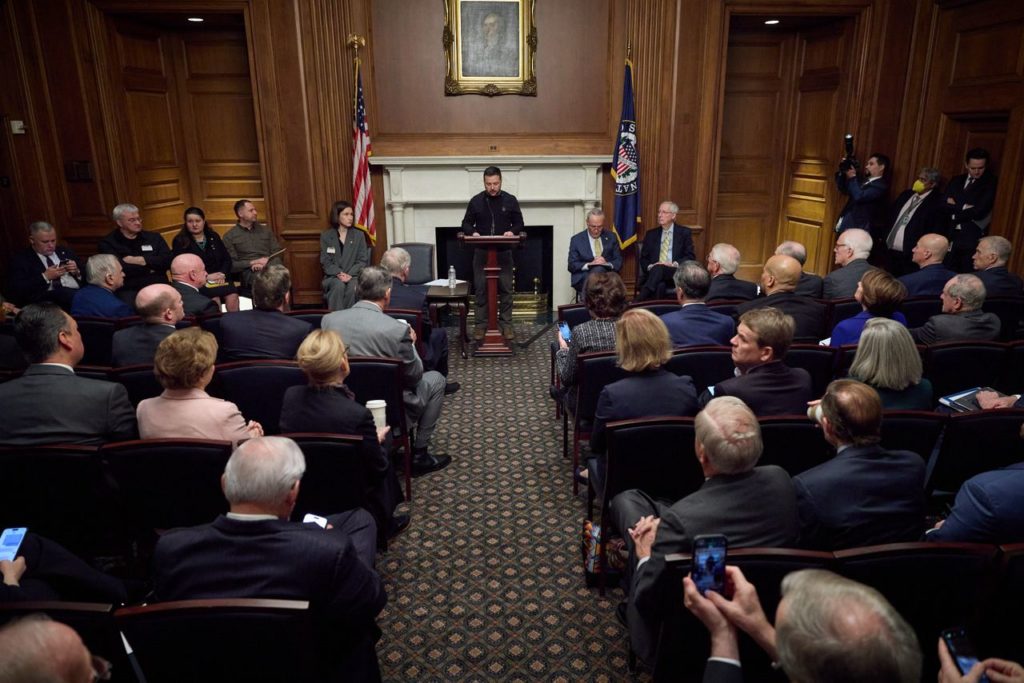
Many of these Republicans, however, are not opposed to Ukrainian aid per se but have simply made it part of their political rivalry. While the potential presidency of Donald Trump is a zone where no forecasts can be made, the majority of Republicans still support Ukraine. This gives hope that Ukraine will get what it needs after resolving internal political issues.
Moreover, questions raised by Republicans regarding the logic of President Biden’s formula of supporting Ukraine “as much as it takes” are actually beneficial: they force the USA, as well as Ukraine, to face the need to create a victory plan:
“Sometimes some of them are asking questions which, honestly speaking, we also would like to figure out. For instance, what is the expected endgame? What is the strategic plan? I don’t know whether these people are asking good questions because of the political process or whether they actually want to know. But finding the strategy and jointly clarifying the final strategic campaign plan, the theory of victory, would certainly help. We don’t want help to continue without hopes for success. We need to calculate success.”
Question marks for 2024
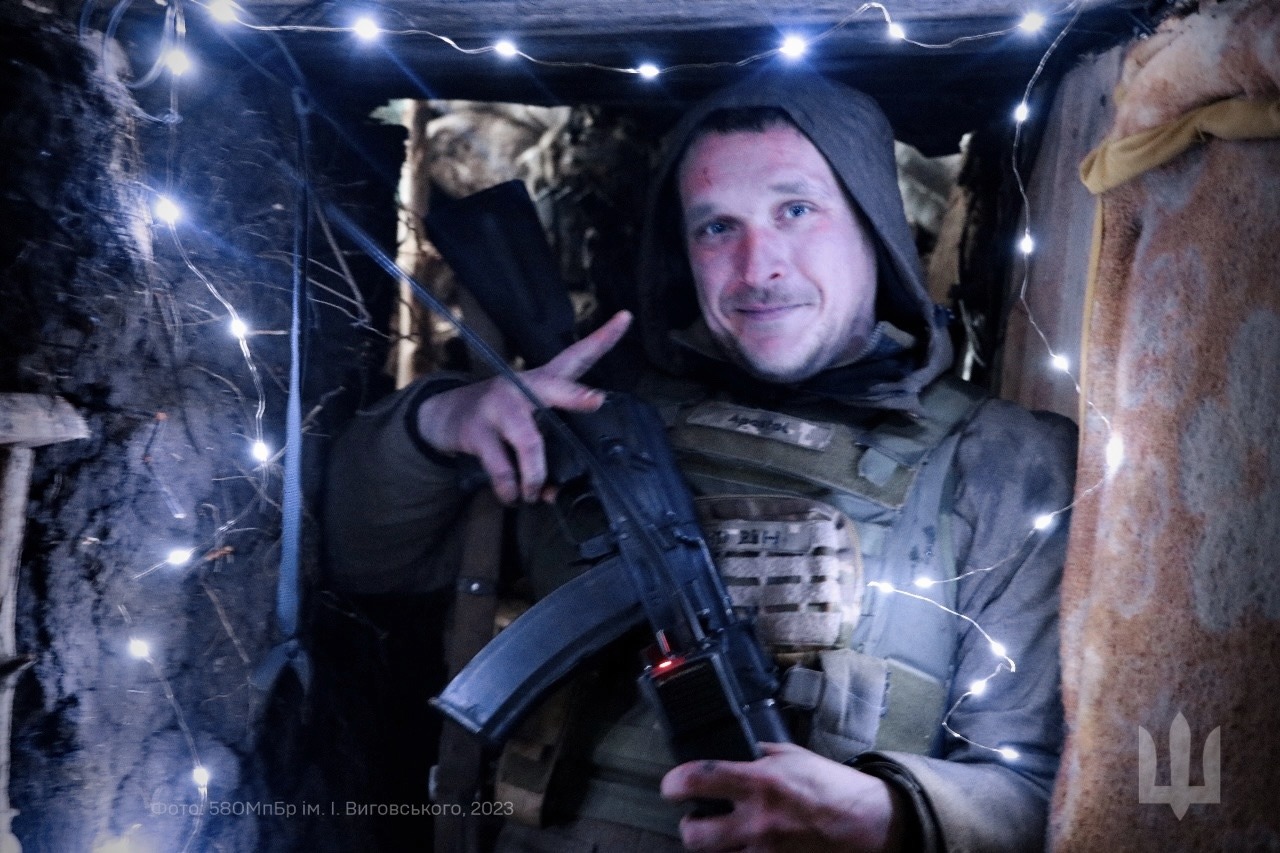
Prognoses for the future vary from Ukraine being unable to launch a counteroffensive until 2025 (WSJ) to Ukraine preparing to pull off in 2024 the assault that it did not manage this year (Welt).
However, forecasts in general are impossible, as there is no reliable data for them, Zagorodnyuk says. Only scenarios dependent on the level of support by Ukraine’s allies exist, with three possible outcomes.
1. Assistance stops, Russia advances
“If assistance stops, then, of course, the front line will move, and not in our favor. We cannot expect a miracle. If we don’t have material to fight with, Russians will be gearing up their production and pushing through.
2. Assistance increases, Ukraine makes technological advancements and starts winning
“If lots of equipment comes and we build up technological advancements, then it would be moving in the other direction, and we would be actually winning. We would be able to destroy their positions, go through the minefields, and create counter-offensives, possibly in another operational direction, and then they will run, like they always do, and retreat like they did before.”
3. A state of potential equilibrium between the sides.
Then, not much will happen in terms of territory.
Which scenario materializes depends on Ukraine and its partners. The decision to give F-16s and long-range missiles was made after a huge delay; so now, let’s train the pilots as soon as possible and give an amount of strike equipment that will actually make a difference, Andriy Zagorodnyuk says.
“As we often say in the analytical community, wasting time on building forecasts makes no sense. Let’s actually build that reality ourselves. Let’s try to influence the situation and condition some of these scenarios.”
Related:
- Ex-Minister Zagorodnyuk: Ukraine can defeat Russia, but West must commit to total victory
- Welt: Ukraine prepping for major offensive “like Zaluzhnyi envisioned” in 2024
- WSJ: Ukraine’s counteroffensive plan hinges on 2025
- War of drones: can Ukraine keep its asymmetric advantage?
- How Ukraine aid became a hostage of the US border crisis





